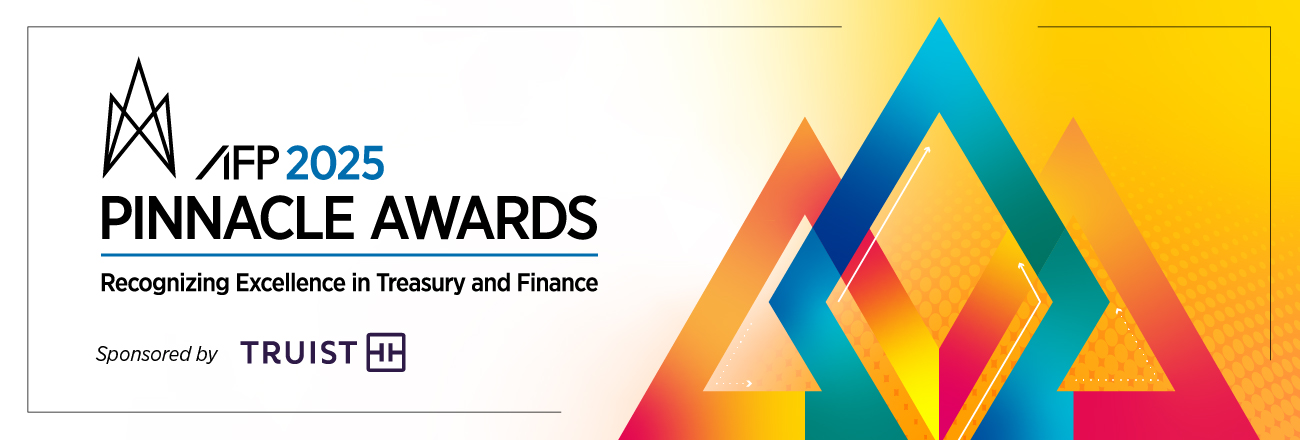Articles
Beyond the Bottom Line: Strategic Cost Management in Action
- By Ebele Lydia Nwani
- Published: 5/14/2025

Innovative Approaches to Identifying Cost-Saving Opportunities and Streamlining Budgets While Aligning with Long-Term Goals
In today’s volatile economic environment, organizations are under increasing pressure to optimize costs without compromising long-term growth. However, cost-cutting for the sake of short-term gain often undermines strategic initiatives. Businesses truly need strategic cost management — an approach that integrates cost control with business strategy, enabling sustainable performance.
In my experience managing financial planning for over $800 million in capital projects, I have seen firsthand that the most effective cost-saving initiatives are not those that come from across-the-board cuts, but those that align with strategic priorities, leverage cross-functional collaboration, and are grounded in data.
Below, I will describe an approach my team and I implemented in a manufacturing organization. This approach illustrates how strategic cost management can be implemented with results.
Key Takeaways
- Cost-cutting alone doesn’t work — Effective cost management aligns spending with long-term strategy, not just short-term savings.
- Frameworks matter — Categorizing projects by strategic value (e.g., compliance, growth, efficiency, discretionary) brings clarity and structure to budget decisions.
- Data reveals hidden opportunities — Reviewing actual vs. budgeted spending helps reallocate funds tied up in stalled or low-priority projects.
- Transparency builds trust — Dashboards and regular reporting foster stakeholder engagement and reduce resistance to change.
- Upfront rigor prevents future bloat — Pre-screening checklists improve the quality of project proposals and minimize unnecessary capital creep.
- Cultural shift is the real win — Moving from “how much can I get?” to “how does this support the strategy?” transforms cost conversations across the organization.
AFP Digital Badge: Critical Thinking for Finance
Prove you can identify trends and “stories” in the data to improve decision-making.
Challenge: A Capital Budget That Was Ballooning Beyond Strategy
Like many mature companies, ours faced a capital budget that grew steadily each year, but not in proportion to business needs. New projects were constantly added, while older ones lingered due to delays or scope creep. Department leaders pushed for funding but lacked a shared framework for prioritization. Meanwhile, critical initiatives tied to growth and efficiency often ended up underfunded.
We needed a better approach that would help us streamline capital spending while staying aligned with strategic goals.
Approach:
Step One: Driving Future Savings Through Better Business Cases and Pre-Project Rigor
Beyond reallocating funds and killing low-value projects, we also improved how we evaluated new requests. We introduced a pre-screening checklist that asked:
- Is this project aligned with a strategic priority?
- Have alternatives been considered (e.g., lease vs. buy)?
- What’s the total cost of ownership, not just CapEx?
- Can the project be phased to reduce the upfront burden?
The checklist forced more thoughtful planning and elevated the quality of business cases. It also helped us prevent “capital creep” — those incremental asks that, in aggregate, bloated the budget over time.
Step Two: Implementing a Strategic Prioritization Framework for New Projects
Introducing a clear, tiered capital investment framework aligned with long-term business objectives. Every project was grouped into one of four categories:
- Tier 1: Mandatory/Compliance — Health, safety, environmental, or regulatory needs.
- Tier 2: Strategic Growth — Projects tied directly to market expansion or innovation(e.g., new product development, market expansion).
- Tier 3: Operational Efficiency — Projects that improved cost efficiency, throughput, or asset performance.
- Tier 4: Discretionary/Enhancement — Nice-to-have or aesthetic projects.
Each project was evaluated through a combination of strategic factors. The factors were assigned a relative importance based on the strategic impact on organizational goals. While financial return (such as ROI or payback period) was important, the framework deliberately emphasized strategic alignment and risk mitigation, recognizing that some initiatives deliver long-term value beyond just immediate financial gains.
Alignment with Corporate Objectives (Weight: ~35%) Projects were assessed on how directly they supported key strategic priorities such as growth, innovation, compliance, safety, and quality. Strong alignment substantially boosted a project’s overall score.
Urgency and Timing (Weight: ~25%) This factor evaluated the time sensitivity of execution, whether due to regulatory deadlines, market opportunities, or seasonal business cycles. Projects with critical timing implications were prioritized accordingly.
Risk of Inaction (Weight: ~25%) We evaluated the potential downside of deferring or ignoring the project, such as operational inefficiencies, reputational damage, or technical debt. This helped highlight the non-financial, preventative value.
Financial Return (Weight: ~15%) Traditional metrics like ROI, IRR, or payback period were used here, but were intentionally given slightly less weight to encourage holistic decision-making.
Each criterion was rated on a scale from zero to 10, and the overall project score was calculated as a weighted average. We conducted working sessions with department heads to introduce the framework, guide business case development, and ensure adoption. This process established a consistent, transparent approach for funding decisions and fostered greater organizational alignment around investment priorities.
Step Three: Redeploying Capital Through Spend Analysis on Existing Projects
Next, we turned to existing projects. In collaboration with facilities engineering and project management teams, we initiated a comprehensive capital spend review.
Rather than finance acting unilaterally, we held working sessions with project owners and department heads to validate findings and assess whether delays were recoverable or if the budgeted funds were no longer needed. This collaborative vetting process ensured informed decision-making. The vetted list was then presented to senior leadership for final review and approval. As a result, we freed up and reallocated capital to higher-impact Tier 1 and Tier 2 projects, aligning resources with organizational priorities.
One surprising insight from our review was that over 25% of our capital budget was tied up in stalled, outdated or misaligned initiatives. We initiated a comprehensive capital spend review in collaboration with facilities engineering and project management teams to address this. Using SAP and Excel-based models, we:
- Analyzed actual year-to-date spend versus budget across all active capital projects.
- Flagged projects with underutilized budgets, chronic overspending, or consistent delays.
- Conducted root cause analysis to identify issues such as scope creep, misaligned timelines, or cancelled objectives.
Importantly, this wasn’t a finance-only decision. We conducted monthly reviews with department leads and held quarterly reforecasting sessions to validate assumptions, discuss recovery plans, and determine whether projects should proceed, pause or be cancelled. Projects that were chronically overbudget were reviewed for scope realignment or deprioritization based on ROI and strategic fit.
The outcome was twofold:
- Freed capital was strategically reinvested into high-impact Tier 1 and Tier 2 initiatives aligned with current priorities across the company.
- In cases where reinvestment didn’t support immediate needs, capital was captured as savings, supporting broader financial resilience goals.
This disciplined and collaborative approach enabled us to free up millions in funds while improving visibility, accountability and alignment of capital spending with organizational strategy.
Step Four: Engaging Stakeholders Through Transparency
A key part of strategic cost management is communication. When departments feel budgets are slashed arbitrarily, they resist change. But when they’re brought into the process, they become partners.
We created a capital budget dashboard in Tableau that:
- Displayed project status, budget vs. actuals, and strategic classification.
- Highlighted top-performing and underperforming areas by measuring key indicators such as completion rate, adherence to budget, schedule variance and alignment with approved scope.
- Provided leadership with a clear visual representation of capital alignment versus actual spend, enabling faster, data-driven decisions and improved oversight of capital investments.
This level of transparency helped us build credibility with senior leaders and gave functional teams insight into how their spending choices impacted the larger business.
Outcome: Tangible Impact and Long-Term Change
Within one year of rolling out this approach, we achieved:
- A 40% reduction in capital expenditures year-over-year.
- Reallocation of over $10 million to strategic growth initiatives.
- Improved forecast accuracy and increased budget discipline.
- Closer alignment between finance, procurement, operations and engineering.
Most importantly, the organization shifted its mindset from “how much can I get?” to “how does this project move the business forward?”
Shifting to a more strategic, value-based capital allocation model wasn’t without its challenges. Naturally, there was some initial resistance from department leaders whose projects were deprioritized or cut. To address this, we focused on transparency and communication, holding working sessions to explain the evaluation criteria, involving stakeholders in the review process, and providing a clear rationale for funding decisions.
Most importantly, the organization began to adopt a new mindset — moving away from “how much can I secure for my department?” toward a more enterprise-focused question: “How does this project move the business forward?” This cultural shift was foundational in building trust and fostering alignment around shared strategic goals, ultimately enabling more effective and equitable capital deployment.
AFP FP&A Maturity Model
Get a roadmap for immediate improvement in FP&A. Prepare for future shifts, define FP&A roles and enhance value delivery to the business.
Final Thoughts: Strategic Cost Management Is an Ongoing Process
True strategic cost management is not a one-time fix — it’s a cultural shift. It requires alignment across leadership, better tools and data, and a willingness to challenge the status quo.
By treating cost as a strategic lever, not a tactical constraint, finance professionals can become partners in innovation, helping their organizations save money and invest wisely in the future.
About the Author
Ebele Lydia Nwani is a goal-driven Senior Financial Planning Analyst with over 15 years of experience in the aerospace and manufacturing industries. She specializes in financial modeling, forecasting, executive reporting, capital project management, and cost governance, enabling cross-functional teams to make informed, data-driven decisions. Highly analytical and tech-savvy, Ebele develops interactive dashboards and utilizes advanced tools to deliver actionable insights. She is currently pursuing an MBA in Finance Leadership and holds certifications in FMVA, Leadership at All Levels (MIT), Business Analysis, and Data Analytics. Her dedication to continuous learning and innovation drives financial performance and operational excellence.
Copyright © 2025 Association for Financial Professionals, Inc.
All rights reserved.

